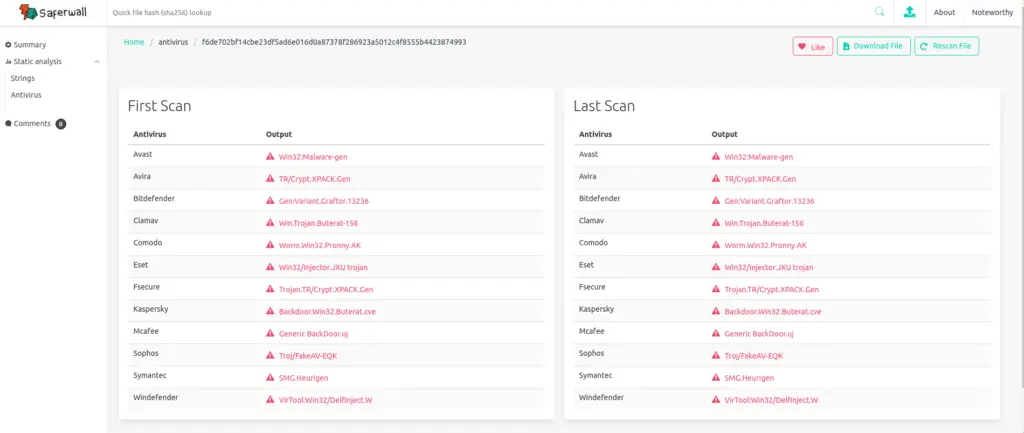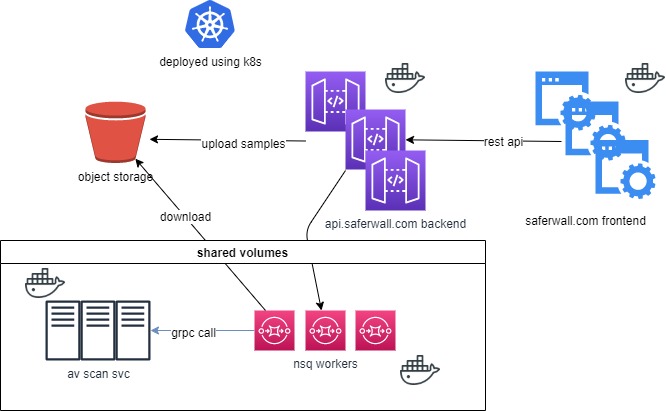
Saferwall is an open source malware analysis platform

A hackable malware sandbox for the 21st Century – https://saferwall.com
It aims for the following goals:
- Provide a collaborative platform to share samples among malware researchers.
- Acts as a system expert, to help researchers generate an automated malware analysis report.
- Hunting platform to find new malware.
- Quality ensurance for signature before releasing.
Features
- Static analysis:
- Crypto hashes, packer identification
- Strings extraction
- Multiple AV scanner which includes major antivirus vendors:
Installation
Saferwall take advantage of kubernetes for its high availability, scalability and the huge ecosystem behind it.
Everything runs inside Kubernetes. You can either deploy it in the cloud or have it self hosted.
Here are the different deployment options available depending on how you are planning to use it:
- Just to get a feeling of the app, you can use the already hosted instance in https://saferwall.com.
- For local testing purposes or individual usage, a Vagrant box is available, the only requirements is virtualbox and vagrant. This setup runs on Windows, Linux and OSX. Please refer to this link for detailed steps.
- In development scenarios, when you intend to make changes to the code and add features, please refer to this link for detailed steps.
- For production grade deployment, we use kops. It automatically provisions a kubernetes cluster hosted on AWS, GCE, DigitalOcean or OpenStack and also on bare metal. For the time being, only AWS is officially supported. A helm chart is also provided for fast deployement. This work well for compagnies or small teams planning to scan a massive amounts of file. Please refer to this link for detailed steps.
Built with:
- Golang mostly.
- Backend: Echo
- Frontend: VueJS + Bulma
- Messaging: NSQ
- Database: Couchbase
- Logging: FileBeat + ElasticSearch + Kibanna
- Metrics: Prometheus
- Minio: Object storage
- Deployment: Helm + Kubernetes
Current architecture / Workflow:

Here is a basic workflow which happens during a file scan:
- Frontend talks to the the backend via REST APIs.
- Backend uploads samples to the object storage.
- Backend pushes a message into the scanning queue.
- Consumer fetches the file and copy it into to the nfs share avoiding to pull the sample on every container.
- Consumer calls asynchronously scanning services (like AV scanners) via gRPC calls and waits for results.
Acknowledgements
- Fangdun Cai for the awesome vue-admin dashboard.
- horsicq for his tool Detect It Easy.
Contributing
Please read docs/CONTRIBUTING.md for details on our code of conduct, and the process for submitting pull requests to us.
























Leave a Reply